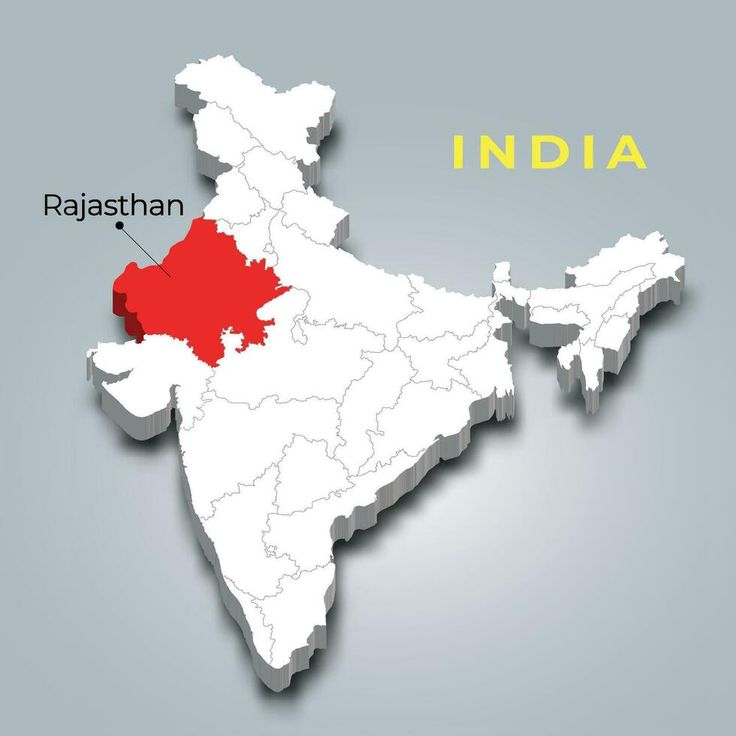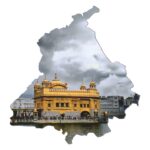Rajasthan: 7 Powerful Insights Into the History, Culture, and Daily Life Impact
Introduction
Rajasthan, often called the “Land of Kings,” is a state located in the northwestern part of India. Known for its vibrant culture, majestic forts, palaces, and rich history, Rajasthan stands out as one of the most culturally significant regions of India. With a legacy shaped by centuries of battles, rule by royal dynasties, and the unique customs of its people, Rajasthan is an essential part of India’s heritage. This article delves into Rajasthan’s history, the impact of daily life, its cultural significance, and how it continues to shape the society around it.
History
It has a fascinating and tumultuous history, defined by the rise and fall of several mighty kingdoms and dynasties. The region has been home to various historical empires and rulers, including the Mauryas, Guptas, Rajputs, and Mughal rulers. Historically, Rajasthan has been strategically significant, given its proximity to the northwestern borders of India, which led to the establishment of numerous forts and defensive structures.
In medieval times, the Rajputs played a pivotal role in the history of Rajasthan. They were known for their bravery and valor, and Rajasthan is home to some of the most famous Rajput dynasties, such as the Mewar, Marwar, and Jaipur kingdoms. The Rajputana states formed a significant part of the British Indian Empire, and the Princely States of Rajasthan maintained a degree of autonomy before India gained independence in 1947.
The independence movement in Rajasthan was marked by numerous uprisings against British rule. After independence, the princely states of Rajasthan were merged to form the modern state of Rajasthan in 1950, contributing significantly to India’s political and cultural fabric.
Daily Life: A Blend of Tradition and Modernity
The daily life in Rajasthan is deeply connected to the region’s culture, which has a strong emphasis on tradition and family values. Here are a few ways daily life is shaped in Rajasthan:
- Agriculture and Rural Life: It’s, despite being a dry and desert region, is largely agrarian, with the majority of the population engaged in farming. Major crops grown include wheat, barley, cotton, and millets. Irrigation plays a crucial role in making agriculture viable in many parts of the state. The people of Rajasthan are known for their resilience in adapting to the tough conditions of the desert, and their work ethic remains a significant part of their daily lives.
- Architecture and Housing: It’s architectural marvels are one of its most defining features. The grand palaces, intricately designed forts, and havelis (traditional homes) built during the era of the Rajput kings stand as a testament to the culture’s rich history. In villages, homes are often designed in traditional styles using locally sourced materials, and these structures blend seamlessly with the rugged desert landscape.
- Clothing and Fashion: The traditional clothing in Rajasthan is influenced by the hot and dry desert climate. Men typically wear dhotis, kurta, and safas (turbans), while women wear lehenga cholis, saris, and the iconic odhani (scarf). The bright and colorful outfits, often adorned with mirror work and embroidery, are a vibrant reflection of Rajasthan’s culture.
- Festivals and Celebrations: Festivals play an important role in the social and cultural life of Rajasthani people. Major festivals such as Diwali, Holi, Teej, and Gangaur are celebrated with great enthusiasm. Desert festivals and camel fairs are also an important part of the annual celebrations, drawing tourists and locals alike to witness traditional performances, folk dances, and camel races.
- Cuisine: The food is rich in flavors, with an emphasis on spices and ghee (clarified butter). Traditional dishes like dal bati churma, gatte ki sabzi, laal maas, and ker sangri reflect the bold and robust flavors of the region. The cuisine is deeply tied to the environment, with ingredients chosen based on what grows best in the desert climate.
Key Facts
- Capital: The capital of Rajasthan is Jaipur, also known as the Pink City, famous for its grand architecture and vibrant bazaars.
- Major Cities: Other major cities in Rajasthan include Udaipur, Jodhpur, Jaisalmer, Ajmer, and Bikaner. Each city is known for its historical monuments and unique culture.
- Language: The official language of Rajasthan is Hindi, though Rajasthani, a group of Indo-Aryan languages, is widely spoken across the state. English is also understood, especially in urban areas.
- Economy: It has a diverse economy that spans across agriculture, mining, handicrafts, textiles, and tourism. The state is also one of the largest producers of marble and granite in India.
- Tourism: It is one of India’s top tourist destinations, known for its rich heritage, historical monuments, and desert landscapes. Major attractions include Amber Fort, City Palace, Jantar Mantar, Lake Pichola, and Thar Desert.
Significance
- Historical Significance: It has been the cradle of several dynasties, each contributing to the architectural and cultural splendor of India. The state is home to some of India’s most magnificent forts and palaces, which are visited by millions every year.
- Cultural Significance: It’s culture is a vibrant tapestry of folk music, dance, art, and cuisine. Ghoomar, Kalbeliya, and Kathputli (puppet shows) are just a few examples of the rich cultural traditions still practiced today. The traditional Kavad art and Pichwai paintings showcase the region’s unique artistic expressions.
- Political Significance: It has played a crucial role in India’s political landscape. The state has produced influential leaders and continues to be a strong player in Indian politics. Rajasthan’s political culture is shaped by its deeply rooted caste-based politics and the influence of powerful dynasties.
- Economic Significance: The state’s agriculture and mining sectors contribute significantly to India’s economy. Rajasthan is also known for its textile industry, producing handwoven carpets, textiles, and handicrafts that are popular worldwide.
- Social Welfare: It has made strides in education and healthcare, though challenges remain, especially in rural areas. The government has focused on improving infrastructure, sanitation, and the standard of living for the rural population.
Observance of Key Events and Festivals
It’s festivals are an embodiment of its culture, with each event offering a unique experience:
- Tej: A festival celebrated by women to honor their husbands, marked by fasting and prayers for long life and prosperity.
- Diwali: Diwali, the festival of lights, is celebrated with grandeur across Rajasthan. Homes and temples are lit up with oil lamps, and fireworks light up the night sky.
- Makar Sankranti: A harvest festival, marked by kite flying competitions, which takes place in January.
- Camel Festival: Held annually in Bikaner, this festival celebrates the cultural heritage of Rajasthan with camel races, folk dances, and music performances.
Wishing for the Future
As It moves into the future, it is important to preserve its cultural heritage while embracing economic development. With its rich history, vibrant culture, and resilient people, Rajasthan is poised to be an even greater contributor to India’s growth in the coming years. Efforts to improve infrastructure, promote sustainable tourism, and enhance education will play a key role in shaping the future of the state.
FAQs About Rajasthan
- What is the capital? The capital of Rajasthan is Jaipur, also known as the Pink City.
- What is famous for? It is famous for its grand palaces, forts, desert landscapes, traditional arts and crafts, and vibrant festivals.
- What is the primary language spoken? Hindi is the primary language spoken, but Rajasthani is widely spoken in rural areas.
- Which are the top tourist attractions? Popular attractions include Jaipur, Udaipur, Jodhpur, Jaisalmer, Amber Fort, City Palace, and the Thar Desert.
- What are the major industries? Major industries include agriculture, mining, textiles, tourism, and handicrafts.
Conclusion
Rajasthan’s rich history, vibrant culture, and resilient people have contributed significantly to India’s diverse cultural landscape. As we look towards the future, the state’s unique combination of tradition and modernity will continue to be its strength. By focusing on sustainable growth, preserving its heritage, and promoting innovation, Rajasthan can continue to thrive as a crucial pillar of India’s development.










